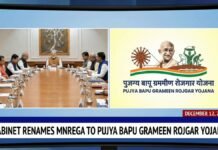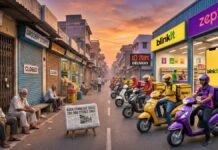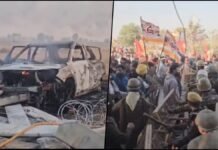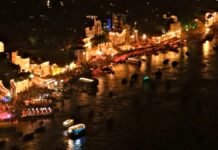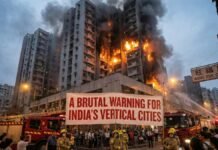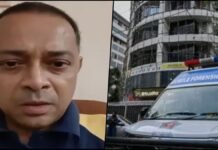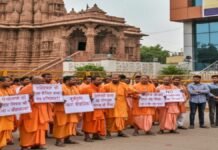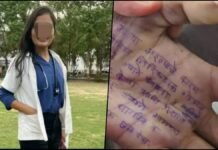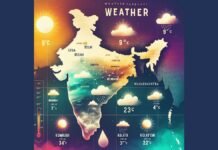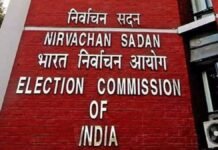
Key Points
- Massive traffic jam stretched from Friday night (November 14) into Saturday morning (November 15), leaving thousands stranded for 7-8 hours on a route that typically takes 2-3 hours.
- Khandala Ghat and Lonavala sections near Khopoli became major bottleneck zones where vehicles remained stuck for over an hour.
- Both the Mumbai-Pune Expressway and the old highway experienced severe congestion, with Google Maps showing extensive red zones indicating standstill traffic.
- Commuters blamed numerous trucks and heavy vehicles for blocking lanes and causing additional slowdowns in the already congested ghat sections.
- Social media users shared videos and frustration, with one viral post describing it as a “full traffic festival” and declaring being “done with this chaos subscription”.
- Highway police and traffic management teams were deployed to regulate vehicle flow and ease congestion by Saturday morning.
- Experts warned drivers on steep ghat sections to monitor engine temperature and clutch plates during prolonged jams to prevent vehicle damage.
Mumbai: The Mumbai-Pune Expressway witnessed unusually heavy congestion beginning Friday night, November 14, 2025, with the situation continuing to deteriorate well into Saturday morning. Social media user Rushikesh Agre first posted about the crisis at 1 AM on Saturday, describing the expressway as hosting a “full traffic festival”. His tone reflected the exhaustion and frustration shared by thousands of travelers stuck in seemingly endless queues of vehicles.
Tagging authorities, Agre remarked that he was “done with this chaos subscription,” pointing to the increasingly common delays that have plagued this critical intercity route connecting India’s financial capital, Mumbai, with the IT hub of Pune. Several videos and social media posts about the traffic jam started surfacing from Friday evening, with commuters documenting the gridlock and sharing their ordeals online.
Saturday Morning Gridlock Continues
Hours after his initial post, at 11 AM on Saturday, Agre shared another update accompanied by a screenshot from Google Maps showing an extensive stretch marked in red, indicating severe congestion. He noted that both the old Mumbai-Pune highway and the expressway were heavily choked near the ghat sections. These areas typically experience bottlenecks during weekends, but commuters emphasized that the situation this time was far worse than usual.
A massive traffic jam brought the Pune-Mumbai Expressway to a complete standstill in the Khandala Ghat section near Lonavala on Saturday morning, around 11 AM, leaving vehicles stranded for over an hour. Traffic moved at a snail’s pace as long queues formed, causing heavy delays for commuters heading towards both Mumbai and Pune.
Ghat Sections Become Major Bottlenecks
Particularly long queues of vehicles formed in the Khopoli and Lonavala Khandala Ghat areas, where slopes and curves already create challenging driving conditions and naturally slow traffic flow. The steep terrain and winding roads in these ghat sections make them prone to congestion even under normal circumstances, but the weekend rush combined with other factors created an unprecedented situation.
According to local media reports and commuter complaints, numerous trucks and heavy vehicles were blocking lanes, which further slowed down traffic significantly. One commuter noted that “all three lanes were jammed with trucks constantly changing lanes in the ghats,” calling for stricter penalties for unnecessary lane cutting by heavy vehicles.
Journey Time Balloons to 7-8 Hours
The most shocking aspect of the gridlock was the dramatic increase in travel time. Agre revealed that his travel time the previous night had shot up to seven to eight hours, trapping motorists on a route that normally takes just 2-3 hours under ideal conditions. This meant that what should have been a routine intercity commute turned into an overnight ordeal for thousands of travelers.
The Times of India headline captured the frustration perfectly: “Mum to Pune in 8 hours: Weekend rush paralyses highways, commuters fume”. Such extended delays not only caused physical exhaustion but also ruined weekend travel plans for families and business travelers alike.
Safety Concerns and Vehicle Damage Warnings
Beyond the inconvenience, the prolonged traffic jam raised serious safety concerns. The posts and reports drew several responses from experienced users who shared practical warnings for fellow commuters. One commuter specifically pointed out that on the old Pune highway, it is crucial to monitor engine temperature and clutch plates during long traffic jams, especially on steep ghat sections where vehicles are prone to overheating.
The advice highlighted a genuine risk: vehicles stuck on inclines for extended periods can suffer clutch burnout, engine overheating, and transmission damage, potentially leaving travelers stranded with mechanical failures in addition to traffic woes.
Authorities Deploy Traffic Management Teams
Highway police and traffic management teams were deployed on-site by Saturday morning to regulate vehicle flow and gradually restore normal traffic movement on the busy weekend route. The teams worked to ease the congestion and manage the flow of vehicles, with efforts underway throughout Saturday to bring the situation under control.
However, as of the latest reports, authorities had not yet released an official statement explaining the exact cause of the prolonged congestion. Regular weekend rush combined with patchwork repairs, ongoing maintenance work, and heavy ghat traffic are likely to have contributed to the extended gridlock.
Weekend Travelers Advised to Reconsider Plans
With weekend outbound traffic expected to increase further, Agre and other experienced commuters advised people to “think before you head out,” urging caution for those planning road trips on the Mumbai-Pune corridor. Netizens urged travelers to reconsider their road plans until traffic conditions improve significantly.
The advice reflects a growing concern among regular users of the expressway that infrastructure upgrades and better traffic management are desperately needed to handle the increasing vehicular load, especially during weekends and holidays.
Recurring Problem on Key Economic Corridor
The Mumbai-Pune Expressway, officially known as the Yashwantrao Chavan Expressway, is a vital economic corridor connecting Maharashtra’s two largest cities. The 94.5-kilometer access-controlled expressway was India’s first six-lane concrete, high-speed expressway when it opened in 2002.
However, traffic jams on this route have become increasingly common, particularly during weekends, long weekends, and holiday periods. Similar massive congestion was witnessed during Maharashtra Day 2025 in April, when heavy holiday traffic led to a 5-kilometer jam in the Bhor Ghat section, leaving thousands stranded.
Social Media Erupts with Frustration
The November 15 traffic chaos sparked widespread reactions on social media platforms, including X (formerly Twitter), Instagram, and Facebook. Commuters shared videos showing vehicles at a complete standstill, stretching as far as the eye could see. The viral posts attracted hundreds of comments from fellow travelers sharing similar experiences and calling for urgent solutions.
The phrase “full traffic festival,” coined by Rushikesh Agre, quickly gained traction as a sarcastically accurate description of the expressway’s condition. His follow-up remark about being “done with this chaos subscription” resonated with regular commuters who have experienced similar delays repeatedly.
Call for Stricter Traffic Discipline
Many commuters and experts have called for stricter enforcement of traffic rules, particularly regarding lane discipline for heavy vehicles. The constant lane changes by trucks in the narrow ghat sections not only slow down traffic but also create safety hazards. Commuters have demanded stricter penalties for unnecessary lane cutting and better segregation of heavy and light vehicles during peak hours.
The recurring nature of such massive traffic jams highlights the need for comprehensive solutions, including infrastructure expansion, better traffic management systems, real-time congestion alerts, and potentially restricting heavy vehicle movement during peak weekend hours.


